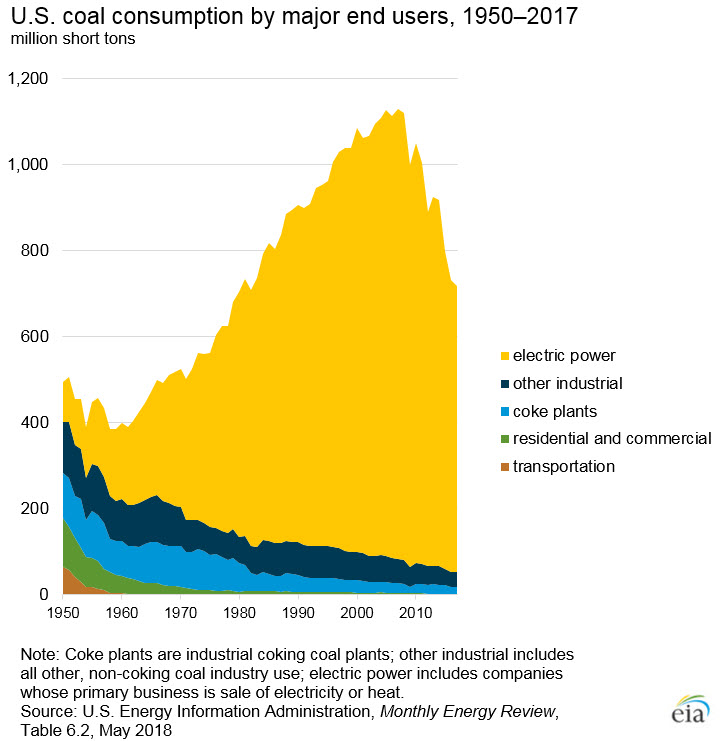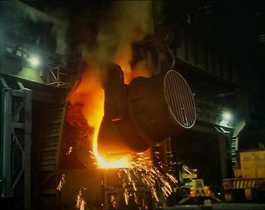Did you know?
A pound of coal supplies enough electricity to power ten 100-watt light bulbs for about an hour.
In 2017, about 717 million short tons of coal were consumed in the United States, equal to about 14% of total U.S. energy consumption. The electric power sector accounts for most of U.S. coal consumption. U.S. coal consumption peaked in 2007 and has declined in most years since then, mainly because of the use of other energy sources for electricity generation.
The amounts—in million short tons (MMst)—and percent of total U.S. coal consumption by consuming sectors in 2017 were
- Electric power—664.7 MMst—92.7%
- Industrial total—51.2 MMst—7.1%
- Industrial coke plants—17.4 MMst—2.4%
- Industrial combined heat and power—13.4 MMst—1.9%
- Other industrial—20.2 MMst—2.8%
- Commercial—1.1 MMst—less than 1%
- Residential and transportation—each less than 1 MMst—less than 1%
Electric power
Coal was the source of about 30% of U.S. total electricity generation in 2017. Power plants make steam by burning coal, and the steam turns turbines (machines for generating rotary mechanical power) to generate electricity.
Many industries and businesses have their own power plants, and some use coal to generate electricity, mostly in combined heat and power plants.
Industry
Many industries use coal and coal byproducts. The concrete and paper industries burn large amounts of coal to produce heat. The steel industry uses coal indirectly to make steel. Coal coke is made by baking coal in furnaces. The steel industry uses coal coke to smelt iron ore into iron to make steel. The high temperatures created by burning coal coke give steel the strength and flexibility needed for bridges, buildings, and automobiles.
Converting coal into gas and liquids
Coal can be turned into gases and liquids that can be used as fuels or processed into chemicals to make other products. These gases or liquids are sometimes called synthetic fuels or synfuels. Synthetic fuels are made by heating coal in large vessels. These fuels produce fewer air pollutants when burned than burning coal directly.
In North Dakota, the Great Plains Synfuels Plant converts coal into synthetic natural gas (syngas). Syngas produced from coal can also be used to produce electricity and hydrogen. Currently, no commercially operating facilities in the United States produce liquids from coal, but coal has been converted to liquids in South Africa for decades.





